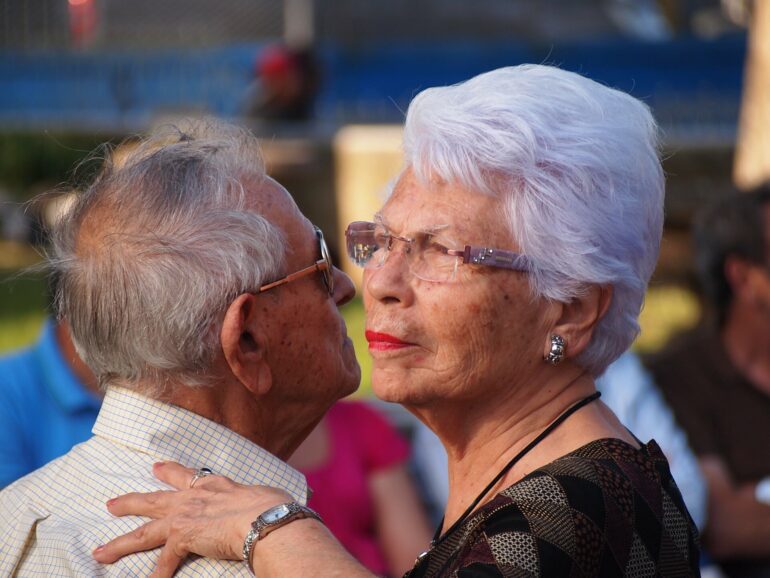Frequent socializing may extend the lifespan of older people, suggests a study of more than 28,000 Chinese people, published online in the Journal of Epidemiology & Community Health.
Socializing nearly every day seems to be the most beneficial for a long life, the findings suggest.
In 2017, 962 million people around the globe were over 60, and their number is projected to double by 2050. Consequently, considerable attention has focused on the concept of “active” or “successful” aging, an important component of which seems to be an active social life, note the researchers.
But most of the evidence for the health benefits of socializing is based on people in Western countries, with little published data on people in Asia.
To try and plug this knowledge gap, the researchers wanted to explore whether the frequency of socializing might be linked to overall survival in a relatively large group of older people living in China.
They drew on participants of the Chinese Longitudinal Healthy Longevity Survey (CLHLS), an ongoing, prospective nationally representative study of older people living independently, which began in 1998.
Information on the frequency of socializing only started being collected in 2002, and the current study focuses on 5 separate waves of data collection up to 2018-19, involving a total of 28,563 participants with an average age of 89.
Participants were asked how often they engaged in social activities: almost every day; at least once a week; at least once a month; occasionally; and never. Information on potentially influential factors was also collected, including sex, education, marital status; household income; fruit and vegetable intake; lifestyle; and poor health.
Survival was tracked for an average of 5 years or until death.
Over the first 5 years 25,406 people said they didn’t engage in any social activities; 1,379 reported doing so sometimes; 693 at least once a month; 553 at least once a week; and 532 almost daily.
During the entire monitoring period, 21,161 (74%) participants died, 15,728 of whom died within the first 5 years.
Overall, more frequent social activity was associated with significantly longer survival. The greater the frequency, the greater the likelihood of living longer.
Up to 5 years from the start of the monitoring period standardized death rates were 18.4 per 100 people monitored for a year among those who never socialized; 8.8 among those who did so occasionally; 8.3 among those who did so at least monthly; 7.5 among those who socialized at least once a week; and 7.3 among those who did so nearly every day.
Time to death was delayed by 42% in those who socialized occasionally, by 48% in those who did at least monthly, by 110% in those who did so at least weekly, and by 87% in those who did so nearly every day, compared with those who said they never socialized.
After 5 years, the survivors included 8,420 people who said they never socialized, 688 who did so occasionally, 350 who did so at least monthly, 295 who did so at least weekly, and 272 who did so nearly every day.
Standardized death rates were 6.2 per 100 people monitored for a year among those who never socialized; 4.8 among those who did so occasionally; 5 among those socializing at least once a month; 5.4 among those doing so at least once a week; and 3.6 among those who did so nearly every day.
A threshold effect was evident: Only socializing nearly every day was associated with significantly longer survival in this group among whom time to death was delayed by 204%.
Factors associated with being more socially active were male sex, younger age, a higher level of education, marriage, living in a town/city and/or with relatives, and actual/self-rated good health.
When the data were further stratified by age, social activity seemed to be even more strongly associated with extended survival within the first 5 years for the oldest old, suggesting that strategies to promote the maintenance of an active social life in very old people, should be encouraged, say the researchers.
This is an observational study, so can’t establish cause. And the researchers acknowledge they weren’t able to include possible changes in socializing or health behaviors over time.
Nor is it clear exactly why socializing in older age might extend survival. The explanations mooted include enhancing healthy behaviors, such as more physical activity and a better diet. Socializing may also mitigate the impact of chronic stressors, say the researchers.
“In our study, although the association between social activity frequency and overall survival attenuated after adjusting for sociodemographic factors, socioeconomic status, healthy behaviors and several morbidities, it still remained statistically significant, which indicated that social activity participation per se was an independent predictor for overall survival in older people,” they conclude.
More information:
Association between social activity frequency and overall survival in older people: results from the Chinese Longitudinal Healthy Longevity Survey (CLHLS), Journal of Epidemiology & Community Health (2023). DOI: 10.1136/jech-2022-219791
Provided by
British Medical Journal
Citation:
Frequent socializing linked to longer lifespan of older people (2023, March 6)



